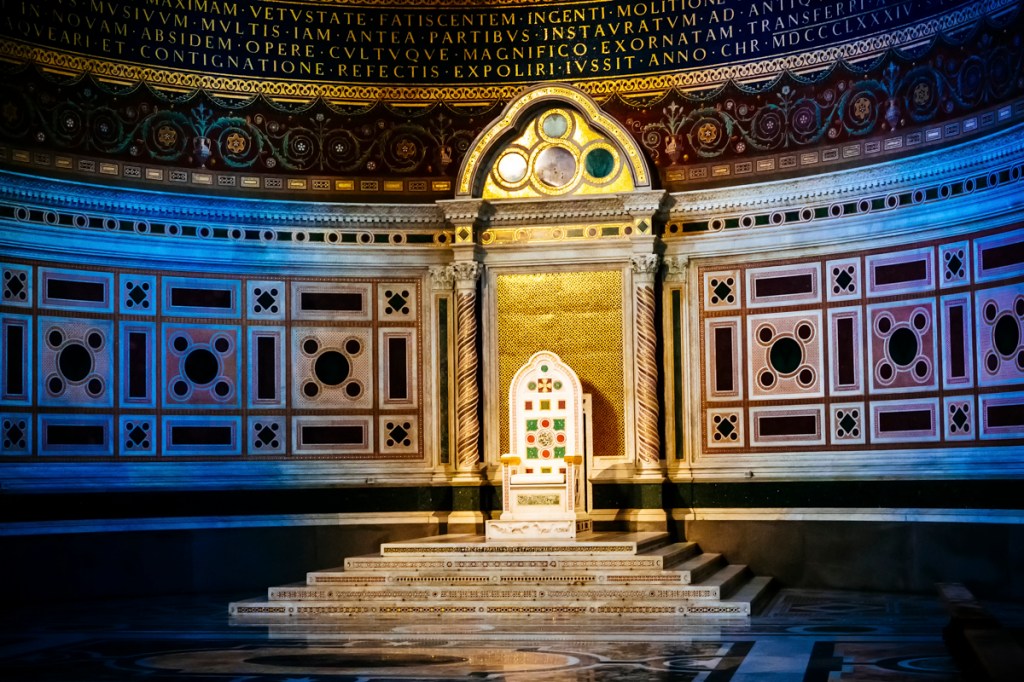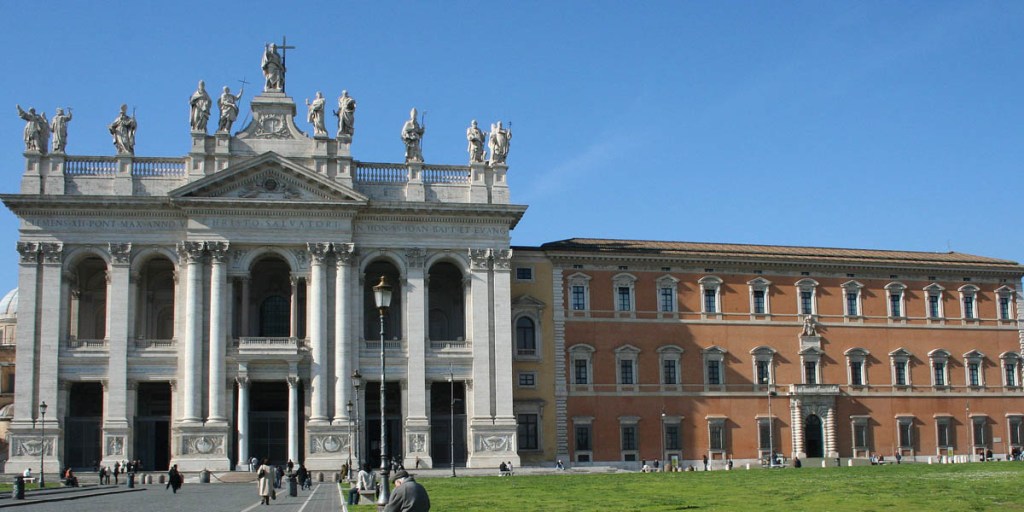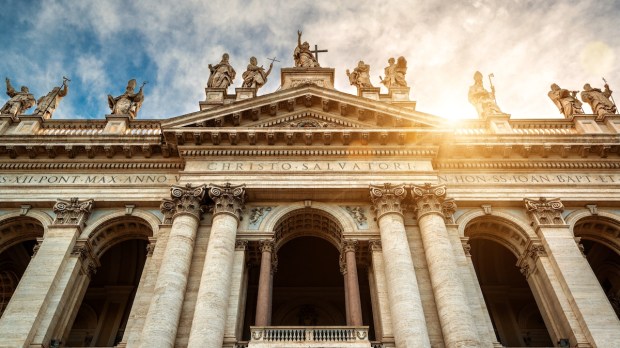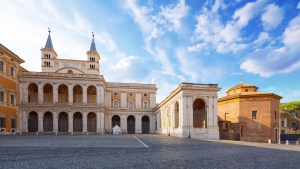This November 9, the Catholic Church is initiating celebrations to mark in 2024 the 1,700th anniversary of the dedication of the Basilica of St. John Lateran. This dedication, which took place in 324, was the consequence of an upheaval in the history of the Church.
With the Edict of Milan in 313, Emperor Constantine finally authorized Christian worship after years of persecution. In 320, Constantine decided to donate a plot of land on the Lateran hill to Pope Sylvester I, so that he could officially build a church.
The Basilica of the Most Holy Savior was inaugurated on November 9, 324. It thus became the first publicly consecrated church. Since then, the Church has regarded it as the mother and head of all the churches — “Mater et caput omnium ecclesiarum,” as the pediment of today’s basilica still reads.
The construction of the Vatican Basilica on the tomb of St. Peter began in 326 and finished in 333. The church on that same site is the more famous church today, St. Peter’s Basilica.
At the time, the architecture of the Lateran Basilica mirrored that of civil “basilicas,” places of legal power where magistrates officiated. These magistrates used to sit on a cathedra, an armchair whose dimensions changed considerably over the ages, and which was associated with authority and teaching, similar to the way a throne is. The first bishops appropriated this piece of furniture, to the point where it became a sign of their authority, and was eventually associated with their church. A bishop’s church then became the “ecclesia cathedralis,“ giving origin to the name “cathedral.”

A “major basilica”
The Lateran Basilica is the location of the pope’s cathedra, and is thus his cathedral. Indeed, it’s the first cathedral in history. It’s also sometimes referred to as a “major basilica,” to emphasize its importance.
The Lateran Basilica contains a baptistery dedicated to St. John the Baptist, and was renamed St. John’s Basilica in the 6th century in honor of the Precursor and Jesus’ cousin. Then, from the 12th century onwards, St. John the Evangelist became associated with the entire cathedral. Although it is now known as the Basilica of St. John Lateran, its real name is “Basilica of the Most Holy Savior and of Saints John the Baptist and John the Evangelist.”
For over 10 centuries, St. John’s was the popes’ main church and palace of residence, despite Rome being sacked twice in the 5th century, the occurrence of earthquakes in the 10th and 14th centuries, and a devastating fire in 1308.
The Avignon papacy, however, changed all this. When Gregory XI returned from Avignon in 1377 to find the Lateran Palace in a lamentable state, he moved to a new apostolic palace in the Vatican. In the 16th century, Sixtus V had the old palace demolished and a new one built, but it was no longer the main palace.

The sign of the pope’s primacy
However, the basilica remains the sign of the pope’s primacy: Until the end of the 19th century and Italian unification, pontiffs were always crowned in the Lateran Archbishop’s Palace. With the election of Leo XIII, the ceremony of enthronement, coronation, and inauguration of the pontificate was transferred to St. Peter’s Basilica. The pope took possession of St. Peter’s cathedra, as Successor to the Apostle Peter, the first pope. A few days later, however, the new pontiff goes to the Lateran for the “incathedratio,” i.e. his installation on the first cathedra in history, on which he officially becomes bishop of Rome.
Another sign of the importance of the Lateran is the fact that, even today, Pope Francis has the custom of signing his texts at the Lateran, a reminder that his decisions are marked by his episcopal primacy as Bishop of Rome.



